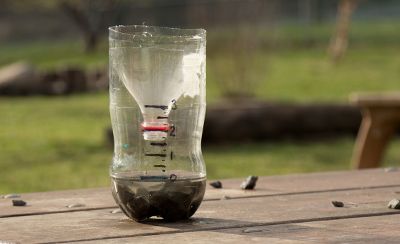How a Rain Gauge Can Boost Your Comprehending of Local Climate Patterns
How a Rain Gauge Can Boost Your Comprehending of Local Climate Patterns
Blog Article
Introducing the Science Behind Rainfall Assesses: Exactly How These Tools Play a Vital Role in Environment Research and Ecological Tracking
Rain evaluates, seemingly easy devices, hold a profound significance in the realm of climate research study and environmental surveillance. As we peel back the layers of this clinical shroud surrounding rainfall assesses, we uncover a globe where precision, information accuracy, and thorough monitoring merge to unveil a deeper understanding of our transforming environment and its effect on the planet.
Significance of Rainfall Gauges
Rainfall evaluates play an indispensable role in surveillance and measuring rainfall levels, providing vital data for climate research study and analysis. These tools are essential in evaluating the amount of rains that happens in a particular location over a particular duration. By gauging and gathering rainwater, rainfall determines deal beneficial understandings into the distribution and intensity of precipitation, aiding meteorologists, hydrologists, and climatologists in comprehending climate patterns and trends.
Furthermore, lasting information gathered from rainfall evaluates assists in examining climate change impacts and patterns, adding significantly to clinical study and decision-making processes. In essence, rainfall gauges offer as vital tools in the field of weather forecasting and ecological scientific research, playing an important role in advancing our understanding of weather and environment dynamics.
Sorts Of Rainfall Gauges

Functionality and Operation
In the world of environment study and meteorological studies, the performance of rainfall determines lies in their detailed performance and accurate operational mechanisms. Rain assesses are designed to properly measure the quantity of rainfall that falls over a details location throughout a collection duration.
The performance of rainfall determines is based on the principle of accumulating and gauging rain in a standard fashion. This accumulated data is critical for recognizing neighborhood weather condition patterns, tracking long-term climate fads, and examining environmental effects. To guarantee precise dimensions, rain determines need to be strategically put in open locations away from obstructions such as buildings or trees that could interfere with the collection process.
The operational facet of rainfall evaluates involves normal maintenance to prevent debris buildup, calibration checks to maintain measurement precision, and information tape-recording for evaluation (rain gauge). Generally, the performance and operation of rainfall gauges are necessary for collecting dependable precipitation information essential to climate research study and ecological surveillance
Duty in Climate Research Study
Provided the critical importance of accurate precipitation measurements in recognizing weather condition patterns and environmental impacts, the function of rain evaluates in environment research is important. Rain evaluates give vital data for climate study by evaluating the quantity of precipitation that falls over a particular location throughout a provided duration. This data is critical for keeping an eye on long-lasting fads in precipitation patterns, assessing the influence of climate modification on rainfall distribution, and improving environment models.

Climate scientists utilize information gathered from rainfall evaluates to analyze variations in precipitation degrees, recognize local environment patterns, and review the efficiency of water source management methods. By comparing historic rainfall information with current dimensions, researchers can find shifts in rainfall patterns, such as modifications in the frequency or strength of rains events. This details is crucial for recognizing just how environment modification is affecting precipitation characteristics and can aid policymakers make informed decisions regarding adaptation and reduction techniques.
Applications in Environmental Surveillance

In flooding projecting, rain scale information aids to track rains strength and circulation, enabling authorities to provide prompt cautions and take needed measures to alleviate flood risks (rain gauge). Drought surveillance relies on rain scale information to assess moisture levels in the soil and track precipitation deficits, aiding in the identification of drought-prone locations and the implementation of dry spell reaction methods
Moreover, rain gauge data plays an you can check here essential role in water source monitoring by offering details on water schedule and use fads. This information is used to make informed choices relating to water allocation, conservation actions, and lasting water source preparation. Furthermore, in farming, rain scale information aids farmers in maximizing irrigation timetables, plant selection, and total ranch monitoring practices based upon neighborhood precipitation patterns. On the whole, rainfall assesses are vital devices in environmental monitoring, providing valuable insights that contribute to educated decision-making and lasting resource administration.
Conclusion
In final thought, rainfall assesses are important tools for gauging rainfall, providing beneficial data for environment research study and ecological surveillance. With different types and performances, rain gauges play an essential duty in recognizing precipitation patterns and their influence on the setting. By precisely determining rainfall, these gadgets contribute to the innovation of scientific expertise and assistance in making useful reference notified decisions related to water source administration and disaster readiness.
Rain evaluates play an important duty in surveillance and determining rainfall degrees, offering crucial information for environment study and evaluation. The conventional rainfall gauge, understood as the "tipping pail" scale, is one of the most commonly used devices. Ultrasonic rainfall evaluates usage sound waves to detect the existence of rainfall, giving real-time information on rainfall levels.Environment scientists make use web of information accumulated from rain gauges to analyze variations in rainfall degrees, recognize local environment patterns, and evaluate the efficiency of water source management approaches.In final thought, rain gauges are vital devices for measuring precipitation, providing valuable data for environment study and ecological tracking.
Report this page